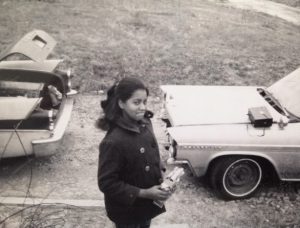Silence is not a solution

I was eight years old when I watched the police hosing and beating Black people on television. There we were as a family watching this on black and white TV in our living room as it unfolded on the evening news. My parents stayed silent but I could see the terror in their faces and I detected tears in my mother’s eyes. But my parents remained silent. As children we probably chose not to ask questions because of what we saw in their faces. Although we never talked about what we saw as children I knew that it was something really bad and something I should do everything to try to stay away from. Growing up in the Mount Airy section of Philadelphia we knew very little about racism and race relations as children. Our parents did their best to help us assimilate into the main stream culture and yet we were aware that we were different at times by the ways we were treated by some adults in the community and in school. As children we were taught to ignore, absorb or deflect these microinequities and microaggressions. And we kept silent but the pain was always there. Our parents understood the price we would pay if we lashed out.
That was more than five decades ago. As an adult well into my college years I learned that what I witnessed on television as a young child was Bloody Sunday during which about 600 nonviolent protesters marched for civil rights. The march took place in Selma, Alabama on the Edmund Pettus Bridge with the late Congressman John Lewis who was at the front of the crowd and the first to be bludgeoned and beaten. With the Congressman’s recent passing it is a teaching moment and for many of us who lived through the moment and didn’t quite understand it’s significance. It is an opportunity to relearn the facts and the impact of this moment on our collective history. It was sad that as children we saw things we were not encouraged to talk about them but to look the other way and only hope that those things wouldn’t come our way. We never discussed it on school.
Silence is not a solution. It is just silence. It doesn’t erase the pain, fear of feelings of intimidation that may lay deep inside of those who are oppressed.
In my work throughout my career I found a way to have dialogue about cultural diversity and differences as a consultant and facilitator. Over the years I’ve offered cultural diversity training and assessments to foster dialogue and improve performance in organizations. My seminars and tools provide a nonthreatening approach to bridge the differences by helping individuals discover their own perceptual biases, gain insight into their beliefs and values, and understand different cultural values in the broadest sense. In the early days I spent much effort making the business case for racial and ethnic diversity and by doing so misunderstandings and miscommunications would be less likely to occur in the workplace making it more productive.
Today we are living in an historic era where social justice, economic, and health issues are clashing and crashing upon one another It reminds me of the old Motown songs of the 70’s, Ball of Confusion and What’s Going On. In some ways we are reliving old history in a new way with the convergence of such monumental issues. The passing of Congressman Lewis at this time amplifies our need to bring even greater attention to helping all of us understand our differences and take action to change things in our own minds and in our institutions, private industry of this great country. Perhaps today’s greatest gift is that we are all being forced to move from being silent to actually talk about racial injustice, true equality and equity. Having dialogue means that we can no longer be silent. And as a society we’ve shifted our cultural awareness from diversity to inclusion.
The late Congressman John Lewis said my bravely, “When you see something that’s not right, you have the moral obligation to say something, to do something.” What will you do?
Leaders of every organization – the time is now to do something about what you are witnessing. It begins with simple steps of taking small actions and it starts with you. The only way to improve race relations is to be brave enough to start the conversation. Actions will follow.

